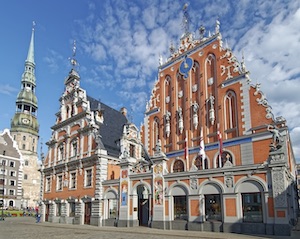 |
Riga
Siutated on the banks of the Daugava River and the shores of the Baltic Sea, Riga is a city that seamlessly blends old-world charm with a modern urban landscape. Its well-preserved historic center, known as the Old Town, is a UNESCO World Heritage site and a testament to the city's cultural and architectural heritage.
The skyline of Riga is dominated by the spires of its medieval churches and stunning Art Nouveau buildings. The city is renowned for having one of the largest concentrations of Art Nouveau architecture in the world, with intricate facades and ornate decorations that showcase the artistic flair of the early 20th century.
Wandering through the narrow cobblestone streets of the Old Town, visitors will encounter architectural gems such as the Riga Cathedral, St. Peter's Church, and the House of the Blackheads. The city's vibrant markets, such as the Central Market housed in impressive Zeppelin hangars, offer a glimpse into the daily life of locals and provide an opportunity to sample delicious Latvian cuisine and traditional products.
Riga is a cultural hub, boasting numerous theaters, museums, and art galleries. The Latvian National Opera and Ballet is a prestigious institution that showcases world-class performances, while the Latvian National Museum of Art houses an impressive collection of Latvian and international art.
The city comes alive with festivals and events throughout the year. The Midsummer Festival, celebrated with bonfires, singing, and traditional rituals, is one of the most beloved cultural events in Latvia. The Riga City Festival and the Staro Riga Light Festival illuminate the city with vibrant displays of music, art, and light installations, captivating locals and visitors alike.
Riga's cosmopolitan atmosphere is further enhanced by its thriving dining scene, trendy cafes, and bustling nightlife. The city offers a wide range of culinary experiences, from traditional Latvian cuisine to international flavors. Its vibrant bars and clubs cater to diverse tastes, ensuring a lively and enjoyable nightlife for both locals and tourists.
Beyond the city center, Riga is surrounded by beautiful natural landscapes. The nearby Jurmala beach resort, with its golden sandy beaches and charming wooden villas, provides a relaxing retreat during the summer months. The Ethnographic Open-Air Museum offers a glimpse into traditional Latvian rural life, showcasing authentic wooden buildings and cultural traditions.
|
| |
Back to Map
|
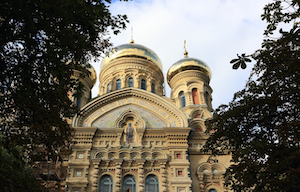 |
Liepaja
Situated on the Baltic Sea coast, Liepaja is often referred to as the "City where the wind is born." With its sandy beaches, picturesque dunes, and fresh sea breeze, Liepaja offers a refreshing escape for both locals and visitors.
Liepaja has a rich maritime history, and its strategic location has made it an important seaport throughout the centuries. The city's historical significance is evident in its well-preserved architecture, particularly in the Karosta neighborhood. This former military town showcases impressive structures such as the Karosta Prison, the Holy Trinity Cathedral, and the Northern Forts.
One of the highlights of Liepaja is its stunning Blue Flag beaches. The white sandy shores stretch for kilometers, offering a perfect setting for sunbathing, swimming, and leisurely walks along the shoreline. Liepaja Beach is a favorite spot for locals and tourists alike, especially during the summer months when the city comes alive with beachside festivals, concerts, and various water sports activities.
Liepaja is also known for its vibrant cultural scene. The city has a thriving music tradition and is home to the Liepaja Symphony Orchestra, which performs in the historic Great Amber Concert Hall. The city has produced numerous renowned musicians and hosts various music festivals, including the annual "Liepaja Summer Sound" that attracts international artists and music lovers.
Art and creativity are embraced in Liepaja, as evidenced by its many art galleries and creative spaces. The city's street art scene adds a vibrant touch to the urban landscape, showcasing colorful murals and artistic expressions throughout the city.
Liepaja is also a city of innovation and technology, with a growing reputation as a hub for IT and start-up companies. It hosts various tech events and fosters a supportive environment for entrepreneurship.
|
| |
Back to Map
|
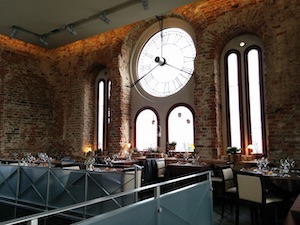 |
Jelgava
Szeged, often called the "City of Sunshine," is a charming Hungarian city on the banks of the Tisza River.
One of the city's most striking features is its architectural splendor. The Votive Church, with its awe-inspiring domes and intricate details, stands tall as a testament to the city's resilience and faith. Strolling through the city center, visitors can admire the grand buildings adorned with elegant facades, including the City Hall and the Reök Palace.
Szeged is also renowned for its cultural offerings. The National Theatre of Szeged is a prominent cultural institution that stages a wide range of theatrical performances, including opera, ballet, and drama. The Szeged Open-Air Festival, held annually in the summer, brings the city to life with a variety of outdoor concerts, theatrical shows, and cultural events.
Food lovers will be delighted by Szeged's culinary scene. The city is famous for its spicy fish soup, a traditional Hungarian dish that draws inspiration from the nearby Tisza River. Visitors can indulge in the rich flavors of Hungarian cuisine at local restaurants, where goulash, paprika-spiced dishes, and chimney cake are among the must-try specialties.
Szeged's commitment to education and knowledge is evident through the presence of several universities and research institutions. The University of Szeged, founded in 1872, is a prestigious institution that attracts students from around the world, contributing to the city's vibrant and youthful atmosphere.
|
| |
Back to Map
|
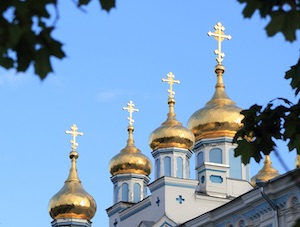 |
Daugavpils
Miskolc, with a population of over 161,000, is the third-largest city in Hungary. It is located in the picturesque Bükk Mountains.
One of the city's notable attractions is the Diosgyor Castle, a medieval fortress that dates back to the 12th century. Its imposing walls and towers evoke a sense of the past, and visitors can explore its historical exhibits and enjoy the scenic views from its elevated position.
Nature enthusiasts will be enthralled by Miskolc's proximity to the Bükk National Park, a haven of breathtaking landscapes and diverse flora and fauna. Hiking trails lead to panoramic viewpoints, hidden waterfalls, and fascinating cave systems, offering outdoor adventures for all levels of exploration.
Miskolc also boasts the unique Cave Bath, an underground thermal spa located in a natural cave system. Visitors can soak in the healing thermal waters while marveling at the surrounding stalactites and rock formations, creating a truly unforgettable bathing experience.
The city's vibrant cultural scene is showcased through its numerous festivals and events. The Miskolc Opera Festival draws music lovers from far and wide with its world-class performances, while the Bartok Plus Opera Festival celebrates the legacy of renowned Hungarian composer Bela Bartok.
|
| |
Back to Map
|
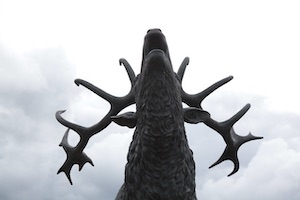 |
Ventspils
Ventspils boasts a rich maritime heritage, evident in its well-preserved old town and the historic Ventspils Port. Strolling through the narrow streets of the old town, visitors can admire the beautifully restored 17th-century buildings and immerse themselves in the city's medieval past. The medieval Castle of the Livonian Order is a notable landmark, providing a glimpse into the city's history and offering panoramic views of the surroundings.
One of the main attractions of Ventspils is its breathtaking Blue Flag beaches. The long stretches of pristine sandy shores invite visitors to relax, swim, and soak up the sun. The Beach Promenade is a popular spot for leisurely walks, lined with vibrant flower beds, sculptures, and picturesque views of the sea.
As the sixth largest city in Latvia, Ventspils is renowned for its family-friendly attractions, including the Ventspils Adventure Park and the Children's Town. These interactive and educational spaces offer a range of activities and entertainment for children, making it an ideal destination for families.
Nature lovers will find plenty to explore in and around Ventspils. The city is surrounded by lush greenery, including parks and gardens, where visitors can enjoy peaceful walks and admire the vibrant colors of nature. |
| |
Back to Map
|
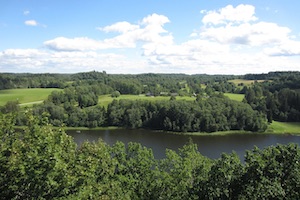 |
Venta River
The Venta River, located in the western part of Latvia, is the fourth-longest river in the country and holds significant cultural and natural importance. Here are some important facts about the Venta River:
-
Length and Drainage Basin: The Venta River stretches approximately 346 kilometers (215 miles) in length and has a drainage basin of around 10,450 square kilometers (4,032 square miles).
-
Flowing Through Two Countries: The Venta River flows through both Latvia and Lithuania. It originates in the northern part of Lithuania and enters Latvia, where it eventually flows into the Baltic Sea near Ventspils.
-
Venta Rapid: The Venta Rapid, located near the town of Kuldiga in Latvia, is the widest waterfall in Europe. Spanning approximately 249 meters (817 feet) in width, the rapid adds to the natural beauty and charm of the river.
-
Cultural Significance: The Venta River and its surroundings have historical and cultural significance. The river and the town of Kuldiga are known for their well-preserved medieval architecture, charming old town, and rich heritage.
-
Wildlife and Nature: The Venta River supports a diverse ecosystem and is home to various species of fish, including salmon, trout, and lamprey. The riverbanks and adjacent wetlands provide habitats for numerous bird species, making it a popular spot for birdwatching.
-
Recreation and Tourism: The Venta River offers recreational opportunities for both locals and tourists. Fishing, kayaking, and canoeing are popular activities on the river, allowing visitors to enjoy the tranquil beauty of the surrounding landscapes.
-
Historical Watermills: Along the banks of the Venta River, you can find several historical watermills that once played a crucial role in the local economy. These mills, some of which are still operational, offer insights into traditional milling techniques and serve as unique cultural landmarks.
-
Ventspils Port: The Venta River flows into the Baltic Sea near the city of Ventspils, which is home to one of the largest ports in the Baltic region. The port plays a significant role in the country's economy and international trade.
-
Scenic Beauty: The Venta River boasts picturesque landscapes, meandering through lush forests, rolling hills, and charming countryside. It provides a tranquil setting for nature lovers, photographers, and those seeking to explore Latvia's natural beauty.
|
| |
Back to Map
|
| |
|
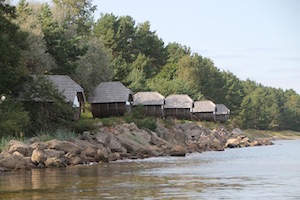 |
Lielupe River
-
Length and Location: The Lielupe River is approximately 119 kilometers (74 miles) long, making it one of the longest rivers in Latvia. It flows through the central part of the country, originating in the Kurland Upland and ultimately emptying into the Gulf of Riga.
-
Important Water Source: The Lielupe River serves as a crucial water source for both human activities and natural ecosystems. It supplies freshwater to nearby cities, including Jelgava and Jurmala, and supports diverse plant and animal life along its banks.
-
Environmental Significance: The Lielupe River plays a vital role in maintaining the ecological balance of the surrounding area. It supports wetland habitats, including marshes and floodplains, which serve as breeding grounds for various bird species and provide a refuge for other wildlife.
-
Navigation and Trade: Throughout history, the Lielupe River has served as an important transportation route for goods and trade. It has facilitated the movement of timber, agricultural products, and other commodities, contributing to the economic development of the region.
-
Recreational Activities: The Lielupe River offers opportunities for various recreational activities. Fishing enthusiasts can enjoy angling for freshwater fish species such as pike, perch, and roach. Boating, kayaking, and canoeing are popular water sports, allowing visitors to explore the scenic stretches of the river.
-
Historical Sites: The banks of the Lielupe River are dotted with historical landmarks and cultural sites. The city of Jelgava, located along the river, is home to the magnificent Jelgava Palace, an impressive architectural gem from the 18th century. The palace and its surrounding gardens attract visitors with their grandeur and historical significance.
Back to Map |
| |
|
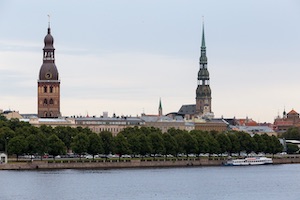 |
Daugava River
-
Length and Location: The Daugava River is approximately 1,020 kilometers (634 miles) long, making it the longest river in Latvia and one of the longest in the Baltic region. It originates in Russia, near the Valdai Hills, and flows through Belarus before entering Latvia, where it eventually empties into the Gulf of Riga.
-
Historical and Cultural Significance: The Daugava River has played a crucial role throughout history, serving as a vital trade route connecting the Baltic Sea with the interior regions of Eastern Europe. It has been an important waterway for transportation, trade, and cultural exchange, shaping the development of the cities and settlements along its banks.
-
River Basins: The Daugava River forms several significant river basins, including the Berezina River basin and the Dnieper River basin. These basins contribute to the overall water resources and hydrological system of the region.
-
Major Cities: The Daugava River flows through or near several major cities, including Riga, the capital and largest city of Latvia. Riga's historic center, a UNESCO World Heritage Site, is situated on the banks of the river and showcases a mix of architectural styles and cultural heritage.
-
Hydroelectric Power Generation: The Daugava River has significant hydropower potential. Several hydroelectric power plants have been constructed along its course, contributing to the generation of clean and renewable energy in the region.
-
Natural Beauty: The Daugava River offers picturesque landscapes and natural beauty, with its meandering course, lush forests, and diverse flora and fauna. It attracts nature enthusiasts and provides opportunities for activities such as boating, fishing, and birdwatching.
Back to Map |
| |
|
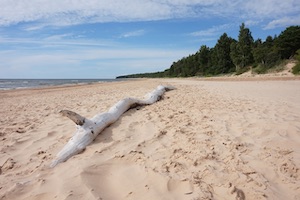 |
-
Geographic Location: The Baltic Sea is bordered by multiple countries, including Sweden, Finland, Russia, Estonia, Latvia, Lithuania, Poland, Germany, and Denmark. It connects to the North Sea through the Danish Straits.
-
Size and Depth: The Baltic Sea covers an area of approximately 415,000 square kilometers (160,000 square miles), making it one of the largest brackish (semi-salty) water bodies in the world. Its maximum depth reaches around 459 meters (1,506 feet) in the Gotland Deep.
-
Brackish Water: The Baltic Sea is characterized by its brackish nature, which means it has a lower salinity compared to the open ocean. This unique mix of saltwater from the North Sea and freshwater from various rivers and streams creates a distinctive ecosystem.
-
Archipelagos and Islands: The Baltic Sea is dotted with numerous islands and archipelagos. Some notable examples include the Aland Islands, Gotland, Bornholm, and the Stockholm Archipelago. These islands offer beautiful landscapes, recreational activities, and cultural attractions.
-
Environmental Challenges: The Baltic Sea faces environmental challenges such as eutrophication, caused by excessive nutrient runoff from agriculture and urban areas. This phenomenon leads to the growth of harmful algae blooms, which can negatively impact marine life and ecosystems.
-
Marine Biodiversity: The Baltic Sea is home to a diverse range of marine species, including fish, birds, marine mammals, and invertebrates. It provides important habitats and feeding grounds for various migratory birds and fish species such as herring, salmon, and cod.
-
Shipping and Trade: The Baltic Sea has been a crucial transportation route for centuries, facilitating trade and connecting countries in the region. Several major ports, including Gdansk, Helsinki, Stockholm, and St. Petersburg, serve as important hubs for shipping and international commerce.
-
Tourism and Recreation: The Baltic Sea attracts tourists from around the world, particularly during the summer months. Visitors enjoy its sandy beaches, picturesque coastal towns, and opportunities for sailing, boating, fishing, and other water-based activities.
-
Historical Significance: The Baltic Sea has played a significant role in the history and culture of the countries surrounding it. It has witnessed Viking expeditions, medieval trade routes, naval conflicts, and the growth of Hanseatic League cities.
-
Environmental Protection and Collaboration: Efforts are underway to protect and restore the Baltic Sea's fragile ecosystem. Various international agreements and organizations, such as the Helsinki Commission (HELCOM), work towards reducing pollution, preserving biodiversity, and promoting sustainable practices in the region.
Back to Map
|
| |
|
|
| |
|
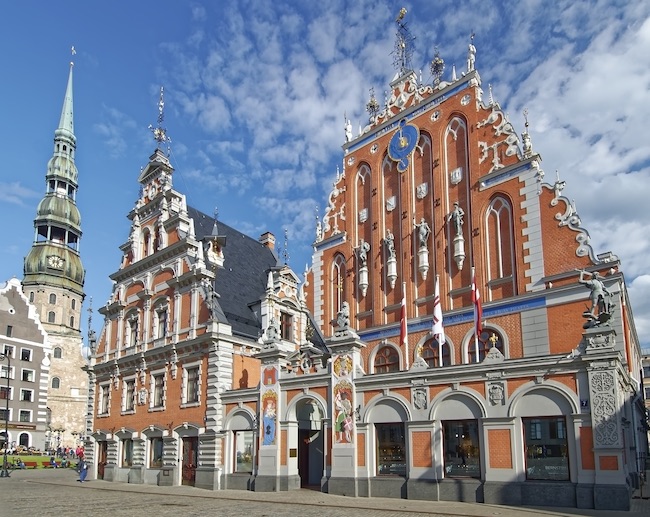
Riga |
| |
|
| Population: |
1,900,000 |
| Area: |
24,938 sq. miles |
| Capital City: |
Riga |
| Largest City: |
Riga |
| Currency: |
Euro |
| Official Language: |
Latvian |
| GDP (Gross Domestic Product) |
$32 billion (102) |
| |
|
| Back to Map |
|
Ten Interesting Facts About Latvia
|
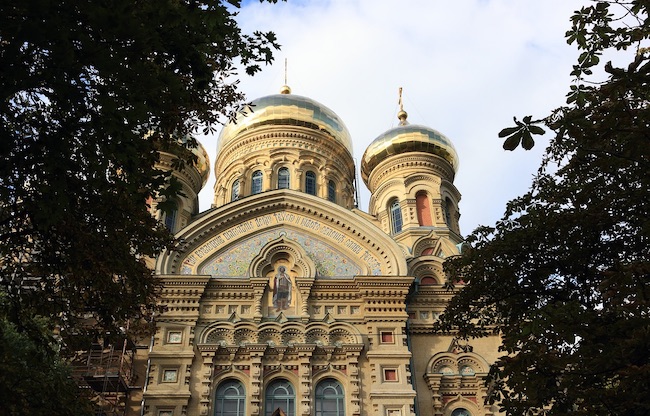
Liepaja
|
-
Geographic Location: Latvia is located in the Baltic region of Northern Europe and is bordered by Estonia to the north, Lithuania to the south, Russia to the east, and Belarus to the southeast. It has a coastline along the Baltic Sea.
-
Song and Dance Festival: Latvia is known for its rich cultural heritage, and one of the most celebrated events is the Latvian Song and Dance Festival. Held every five years, it brings together thousands of performers who showcase traditional folk songs, dances, and costumes.
-
Riga's Art Nouveau Architecture: Riga, the capital city of Latvia, boasts one of the world's largest collections of Art Nouveau architecture. The city center features numerous buildings adorned with intricate facades, sculptures, and ornate details.
-
Winter Sports: Latvia offers excellent opportunities for winter sports enthusiasts. The country has several ski resorts, ice skating rinks, and bobsleigh tracks. Sigulda, located near Riga, is a popular destination for winter activities.
-
Latvian Cuisine: Latvian cuisine is influenced by its natural surroundings and Baltic traditions. Traditional dishes include grey peas with bacon, potato pancakes, smoked fish, and the famous Latvian rye bread. Riga Black Balsam, an herbal liqueur, is a notable Latvian drink.
-
Amber Coast: The Baltic Sea coast of Latvia, known as the Amber Coast, is a treasure trove for amber enthusiasts. Amber, known as "Baltic gold," can be found washed ashore on the beaches, and amber jewelry is a popular souvenir.
-
Forests and National Parks: Latvia is abundant in forests, covering approximately half of its territory. The country has several national parks, such as Gauja National Park and Kemeri National Park, offering picturesque landscapes, hiking trails, and diverse wildlife.
-
Traditional Festivals: Latvia celebrates a range of traditional festivals throughout the year, including Midsummer (Jani), which marks the summer solstice, and Martini, a celebration of autumn harvest. These festivals showcase folk traditions, music, dancing, and local cuisine.
-
Ethnographic Open-Air Museums: Latvia is home to several open-air museums that provide insights into the country's rural heritage. The most prominent one is the Latvian Ethnographic Open-Air Museum in Riga, which showcases traditional Latvian village architecture, customs, and crafts.
-
Baltic Beaches: Latvia offers pristine sandy beaches along its Baltic Sea coast. Jurmala, a popular beach resort town near Riga, attracts tourists with its beautiful coastline, pine forests, and spas. The beaches provide opportunities for sunbathing, swimming, and leisurely walks.
Back to Map
|
| |
|
| |
|
| |
The flag of Latvia is a simple yet striking design that holds great significance for the country and its people. It consists of three horizontal stripes of equal width, with a carmine red stripe at the top, a white stripe in the middle, and a carmine red stripe at the bottom.
The flag's design reflects the national colors of Latvia, which have been historically associated with the country. The carmine red color represents the bravery and courage of the Latvian people, as well as their determination to defend their homeland. The white color symbolizes purity, honesty, and the striving for truth and justice.
The Latvian flag has a long history, dating back to the early 20th century when the country first gained independence. It was officially adopted as the national flag of Latvia on February 27, 1922. During the Soviet occupation, the use of the Latvian flag was banned, but it regained its status as the national flag after Latvia regained its independence in 1991.
Back to Map |
|












